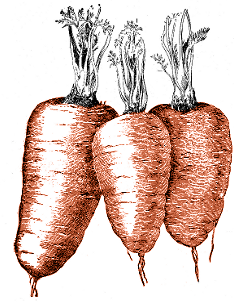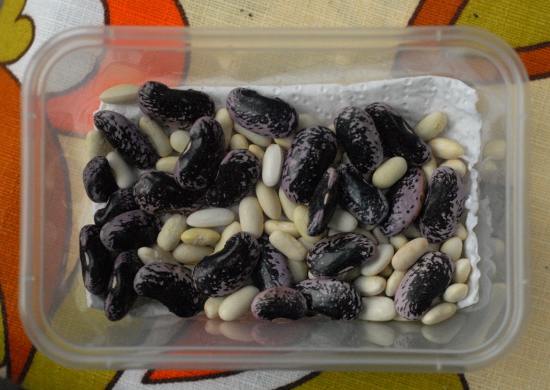Merry Christmas!
This isn’t our garden. But it is a Christmas garden. K’s parents’ house, three years ago today, in deep snow.



Merry Christmas, and a happy garden Yuletide!


Gardening made up as we go along
This isn’t our garden. But it is a Christmas garden. K’s parents’ house, three years ago today, in deep snow.



Merry Christmas, and a happy garden Yuletide!

The frost has really started to come in in the past week. I’m learning which parts of the garden are hit by it the hardest: the sheltered area between shed and house stays frost-free the longest, and the other side of the shed, where the bee house is, also seems to stay fairly sheltered. The middle of the garden, and the prime planting area, get hit the hardest, although so far this winter the perennial plants seem to be largely bearing up. Fingers crossed.
After I planted the garlic, three weeks ago, there were a few small cloves left over from the bulb. Today, I planted those up in the containers that, this year, we grew carrots in. The carrots – more of that free BBC seed – did not really grow very well, possibly because the containers are a little small. We will see how the garlic does: we’re starting, in these containers, with the least-viable-looking cloves already, so there won’t really be any scientific conclusions we can draw from it.
The three-weeks-planted garlic hasn’t appeared above the surface yet. K says I’m being silly, looking regularly, because at this time of year it won’t break the surface for months. But, still, I keep looking to see if sprouts have appeared.

We missed harvesting the last green beans and runner beans this year, because we had a holiday planned. By the time we got home, they had gone past eating. Still, no point letting them go to waste, so we left the beans on the plant to develop and dry. That was the intention, at least: as the weather became wetter, it didn’t look like there was much chance of them drying successfully on the plant, so we picked them and popped them into a tub in the fridge – unsealed, but covered with kitchen roll. I gathered it would be a good drying-out spot for beans: cold, dark, and naturally drying. Now, a few weeks later, they are dry, hard, and ready to be popped into a storage tin. And they are beautiful: creamy-white green beans and rich, midnight blue and pink runner beans.

It is, really, the whole point of sustainable gardening. We are never going to be self-sufficient, with our little city plot, but equally we don’t want to be restocking our containers with freshly-grown garden centre seedlings each spring when we can raise our own instead. I don’t expect all of these seeds to be viable, but we don’t need many to be viable: this pot could fill our entire garden with beans if we wanted. This isn’t sophisticated breeding: the runner beans are from some spare plants a friend gave us, and the green beans are from some free seeds the BBC was giving out the other year, part of their Dig In project. Being beans, they might not even breed true, but hopefully next year’s bean supply is now in place.

In the news the other day: the ongoing drought is, well, ongoing; it will take an awful lot of rain just to get our aquifiers back to where they normally are by the end of winter.
Over in Bristol things aren’t as bad as they are further east: we have more rainfall over here than the rest of the country, or at least it always feels that way. Still, it makes me feel guilty about container gardening. It does need more water: containers are always drying out, and don’t catch as much rain as you might expect, especially in a sheltered garden with walls and fences on all sides. Our back bed, when we get it into use, will assuredly be always slightly too damp: it already tends to have a green scum quickly appearing on the surface of the soil, as if it were still in the Proterozoic eon.
What we should be doing, of course, is getting a butt set up. Indeed, if you scroll down or look back at the layout of our garden, you’ll see that we have a couple of potential butt-sites mapped out. One, by the door, would take up quite a bit of our main container-planting space. The other, in a corner between the shed and the house, would be a useful way to occupy an awkward spot; but the problem is getting the water to it. The former site is right by the downpipe, but the more useful site is a long way from the water supply. A pipe would have to be run across the back of the house – right across where the kitchen window is. The gutters are too low, really, to run a pipe across the top of the window, and a pipe underneath it would mean a rather short water butt.
The whole thing is a bit of a tricky problem. I know, conscientiously, we should be saving at least a portion of our rainwater, but finding the place to save it in is going to be a problem. Maybe we’re going to have to think of another way to do it, and work out a more radical answer.

A blog about regular everyday gardening in South-West Britain, and inspirational things on the same theme. It started out about a tiny urban garden in South-West England, and now is about a slightly larger suburban garden in South-East Cymru. For other stuff, see the main blog.
E: feedback [at] symbolicforest [dot] com.
Flickr: forest_pines
Mastodon: @forestpines@hachyderm.io
| M | T | W | T | F | S | S |
|---|---|---|---|---|---|---|
| 1 | 2 | 3 | 4 | |||
| 5 | 6 | 7 | 8 | 9 | 10 | 11 |
| 12 | 13 | 14 | 15 | 16 | 17 | 18 |
| 19 | 20 | 21 | 22 | 23 | 24 | 25 |
| 26 | 27 | 28 | 29 | 30 | 31 |
autumn back bed bean bee borage bristol bumblebee calendula chard chives coriander decay diary fennel flowering garlic germination green bean lavender lettuce marigold mint nasturtium pea planting potato public garden radish rocket rosemary runner bean saving seed scallion seed snail sowing sowing plan spring spring onion sprouting squash sunflower sweet pea swiss chard thyme Tropaeolum weather weeding winter
See also: the Index of all tags